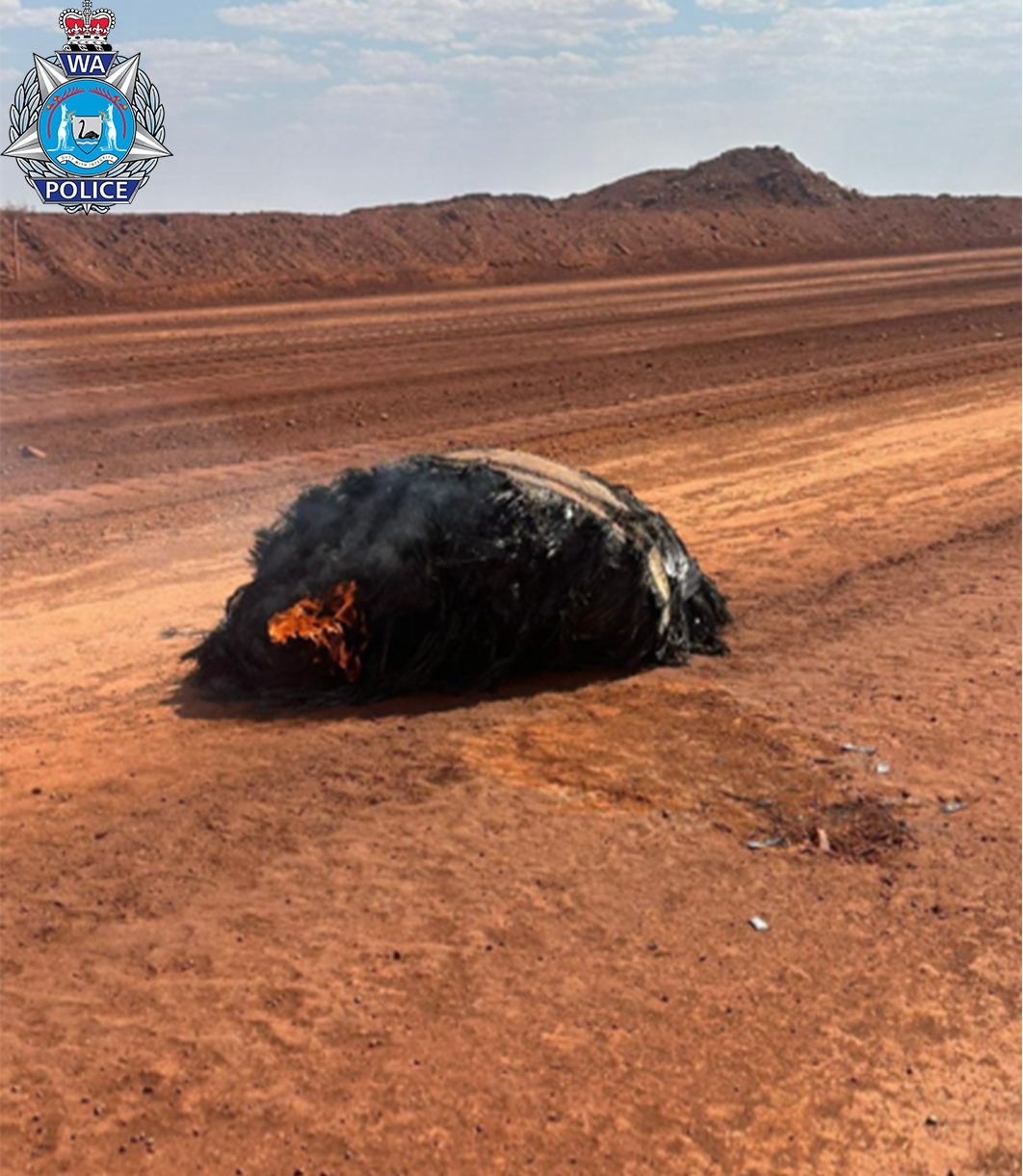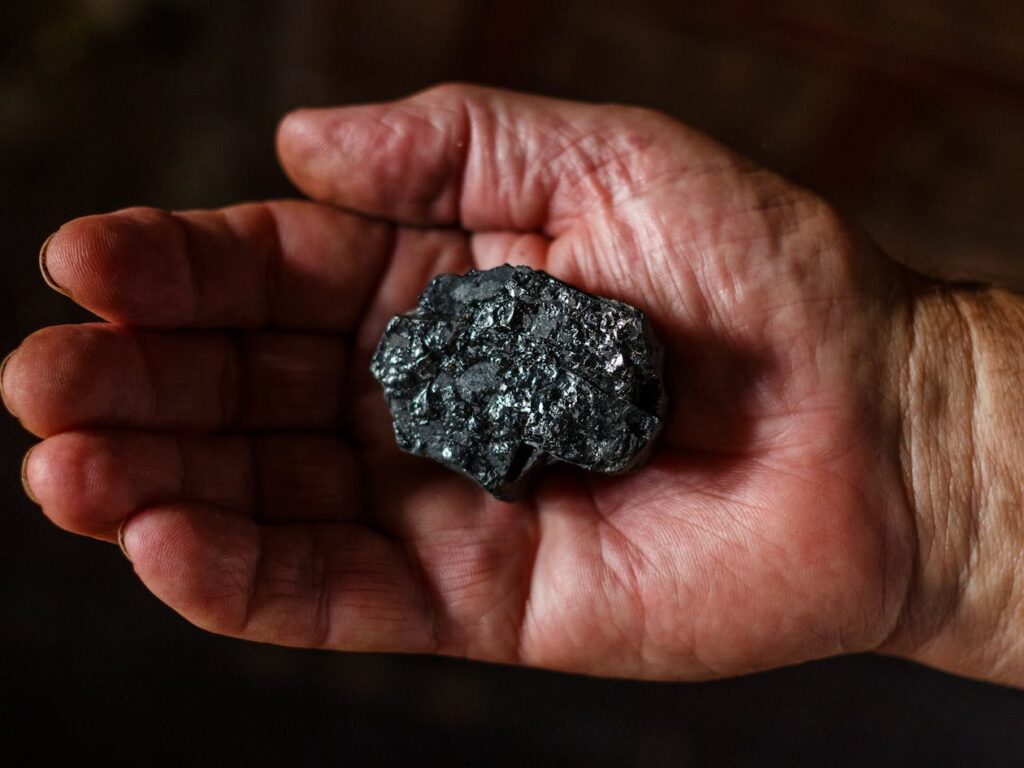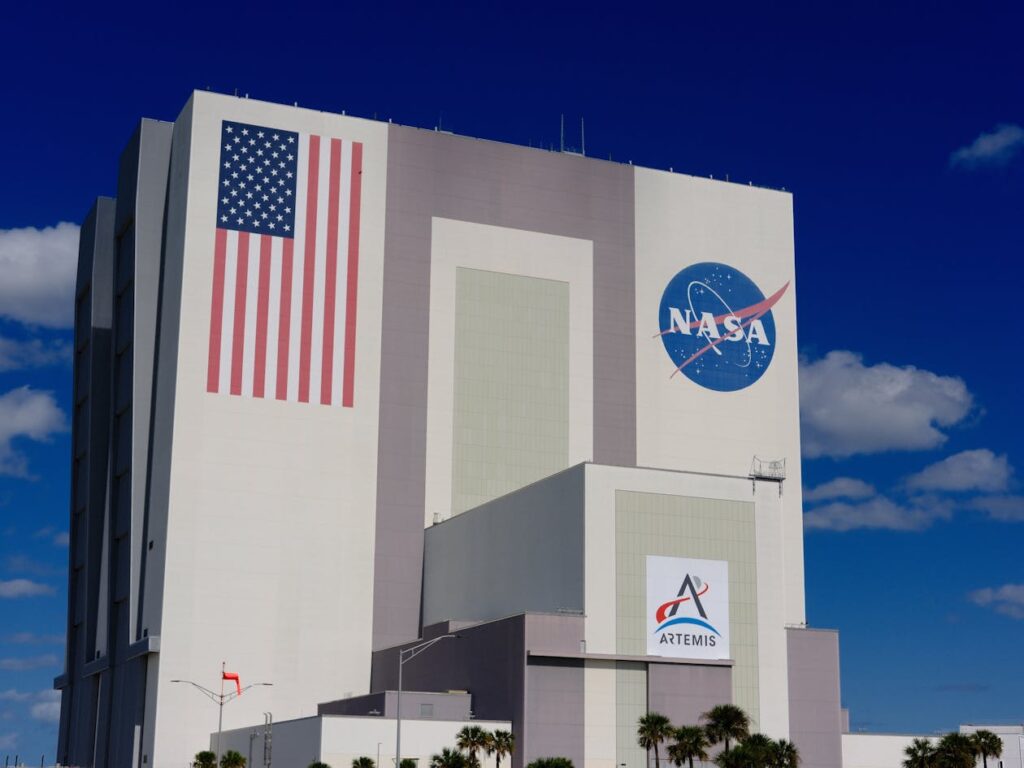Mysterious Smoldering Object Lands in Australian Outback as Experts Give Theories on What It Could Be

Red desert sand glowed beneath something that shouldn’t exist there. Mine workers near Newman discovered an object actively burning on a remote access road Saturday afternoon. Flames flickered from its center. Heat radiated across the Pilbara landscape. Nobody knew where it came from or what it represented.
Emergency services rushed to the scene around 2pm. Photographs captured a large, dome-shaped mass emitting light and smoke. Black carbon fiber construction suggested sophisticated engineering. By the time authorities secured the area, fire had consumed much of the object’s surface, leaving a burnt-out shell.
Multiple agencies converged on the isolated site. Police cordoned off the location. Investigators began examining possibilities. Commercial aircraft? Ruled out immediately. Weather balloon? Wrong materials entirely. Something far more intriguing emerged as the leading theory once experts analyzed the evidence.
Mine Workers Discover Burning Mystery Object
Newman sits deep in Western Australia’s Pilbara region, surrounded by mining operations and vast expanses of nothing. Remote access roads service extraction sites scattered across terrain that stretches for hundreds of kilometers. Workers travel these routes regularly without incident.
Saturday changed that pattern when personnel spotted something extraordinary near their facility. Large object burning on red sand captured immediate attention. Shape and size indicated this wasn’t natural debris or mining equipment. Material composition looked foreign to standard industrial operations.
Mine site employees contacted emergency services without delay. Protocol required assessment of potential hazards before approaching unknown objects. Fire services, police, and safety officials mobilized toward coordinates provided by the workers. Distance meant response times stretched longer than urban emergencies.
First responders arrived to find object still smoldering despite desert conditions that typically extinguish fires quickly. Carbon fiber construction became apparent upon closer inspection. Dome configuration suggested pressure vessel design. Engineers recognize such components from aerospace applications immediately.
Police Cordon Off Area While Investigation Begins

Western Australia Police took command of the scene once initial safety assessments confirmed no immediate explosive risk. Perimeter established around impact site prevented unauthorized access while specialists gathered data. Multiple agencies joined coordination efforts.
Australian Transport Safety Bureau received early notification about the discovery. Aviation safety investigators examine any objects that might threaten commercial flight operations. Initial analysis eliminated commercial aircraft as source. No missing planes reported. No distress signals received. Object clearly originated elsewhere.
WA Police issued official statement addressing public concerns: “In consultation with the Australian Transport Safety Bureau, the object has been ruled out as originating from a commercial aircraft. Further technical assessment will be undertaken by engineers from the Australian Space Agency to assist in identifying its nature and source.”
Australian Space Agency became primary investigative authority once aerospace origins seemed probable. Engineers with specialized knowledge about spacecraft construction, rocket components, and orbital mechanics took over technical evaluation. International coordination began immediately to identify possible launch sources.
Space Archaeologist Identifies Chinese Rocket Stage
Dr. Alice Gorman from Flinders University specializes in space archaeology, studying human activities in orbit and debris returning to Earth. Her expertise made her natural contact for media seeking explanations about mysterious falling objects. Newman discovery caught her attention immediately.
Gorman examined available photographs and descriptions before offering assessment. Material composition, size parameters, and construction details suggested specific origin. Her analysis pointed toward Chinese space program operations from recent months.
“It seems to be the fourth stage of a Jielong rocket,” Gorman stated in her evaluation. “There was one launched in late September. If it is the one from the 25th, that means it’s been orbiting the Earth for a bit and then came out of the blue.”
Timeline aligned with re-entry calculations. Rocket stage launched approximately three weeks before Newman discovery. Orbital period sufficient for multiple Earth circuits before decay brought it down. Location of impact fit within predicted re-entry corridors for objects in similar orbits.
Unexpected aspect troubled Gorman more than the object itself. Re-entry occurred without advance warning or prediction. Space agencies typically track larger debris and calculate probable impact zones days or weeks ahead. Newman object appeared suddenly, suggesting tracking limitations or communication failures.
Carbon Fiber Construction Points to Aerospace Origin

Initial assessments confirmed sophisticated material engineering. Carbon fiber composites wrapped around pressure-resistant core indicated advanced manufacturing. Such construction appears primarily in aerospace applications where weight reduction and strength become paramount concerns.
Composite-overwrapped pressure vessels serve crucial functions in rocket propulsion systems. Fuel tanks require materials that withstand extreme pressures while minimizing mass. Carbon fiber layers over metal cores provide ideal solution. Design allows larger fuel capacity without proportional weight increase.
Rocket tanks constructed this way survive certain re-entry conditions that would destroy simpler components. Heat shields protect spacecraft during controlled descents, but uncontrolled re-entries subject objects to irregular thermal stress. Tumbling motion distributes heat unevenly, sometimes allowing portions to reach ground intact.
Characteristics observed in Newman debris matched known space re-entry patterns. Burn marks indicated atmospheric friction during descent. Dome shape suggested pressure vessel design common in upper rocket stages. Size corresponded to fourth-stage components from medium-lift launch vehicles.
Why This Rocket Part Survived Atmospheric Re-Entry

Most space debris disintegrates completely during atmospheric re-entry. Friction generates temperatures exceeding 1,500 degrees Celsius. Aluminum components vaporize. Steel structures melt. Composite materials typically burn away before reaching ground level.
Fuel tanks represent notable exceptions. Construction from titanium alloys provides exceptional heat resistance. Melting points for these materials reach 1,668 degrees Celsius or higher. Carbon fiber overlays add additional thermal protection while maintaining structural integrity under stress.
Perth Observatory’s Matt Woods explained survival mechanics to media outlets investigating the incident. Tumbling motion during descent affects which sections receive most thermal exposure. Random rotation sometimes shields certain areas while others burn away completely.
“It is on purpose that this bit of rocket body has landed back, but it could just be the way that it’s been tumbling that this piece was able to survive,” Woods noted during his analysis.
Shape plays role in survivability as well. Dome configuration presents smaller cross-section to airflow during certain orientations. Reduced surface area exposure means less friction heating. Pressure vessel walls thick enough to contain rocket fuel also provide insulation against atmospheric temperatures.
Western Australia Becomes Accidental Space Junk Magnet
Newman incident marks latest in series of space debris discoveries across Western Australia. Geographic factors make region statistically likely landing zone for objects re-entering from common orbital inclinations. Remote terrain means debris often goes undiscovered, but recent finds suggest frequency increasing.
July 2023 brought discovery at Green Head, approximately 250 kilometers north of Perth. Beachgoers spotted large cylindrical object washed ashore on coastal sand. Australian Space Agency investigation identified debris as extended third stage from Indian Space Research Organisation polar satellite vehicle.
Earlier in 2025, Mother’s Day meteor scattered fragments across outback regions. Multiple pieces recovered by researchers studying atmospheric entry phenomena. Smaller scale than rocket stages, but demonstrated ongoing pattern of space materials reaching Australian soil.
Western Australia’s massive land area contributes to debris recovery frequency. Second-largest state worldwide after Sakha Republic in Russia, covering over 2.5 million square kilometers. Remote desert regions provide natural landing zones where debris causes minimal damage or injury risk.
Indian Rocket Debris Sat on Beach for Six Months
Green Head discovery created unusual diplomatic situation. Australian authorities identified debris origin quickly, contacting Indian space officials about retrieval. Response disappointed communities hoping to keep object as local attraction.
Indian Space Research Organisation declined to claim or retrieve debris. Transportation costs exceeded value of recovering used rocket components. Space agencies typically abandon debris after successful launches unless components contain sensitive technology or reusable equipment.
Object sat on Green Head beach for six months while authorities determined final disposition. Local residents advocated for keeping debris in their community. Tourist attraction potential seemed obvious. Few places worldwide could claim authentic space hardware as local landmark.
Government ultimately decided Perth’s Scitech science center provided better location. Science Minister Stephen Dawson explained reasoning focused on educational access. Maximum number of Western Australians could view debris, learn about space exploration, and potentially develop interest in STEM fields.
Decision disappointed Green Head residents but served broader public benefit. Scitech display allows organized educational programs, expert commentary, and proper preservation conditions. Object now contributes to science education rather than sitting exposed to coastal weather.
European Space Agency Pushes Zero Debris Charter

International space community recognizes growing problem of orbital debris and uncontrolled re-entries. European Space Agency Director General Dr. Josef Aschbacher visited Australia recently for International Astronautical Congress. Conversations focused on debris management challenges facing all spacefaring nations.
European Space Agency created zero debris charter addressing end-of-life planning for satellites and rocket stages. Signatories commit to removing spacecraft from orbit after mission completion. Requirements include design modifications and operational changes.
Spacecraft need sufficient fuel reserves for controlled de-orbit maneuvers. Launch planning must account for disposal operations, not just mission objectives. Design requirements specify materials that break into small pieces during atmospheric re-entry. Small fragments burn completely before reaching ground level.
Controlled re-entries direct debris toward Point Nemo, remote Pacific location furthest from any land mass. Spacecraft graveyard protects populated areas and shipping lanes from falling objects. Environmental concerns arise about ocean dumping, but approach prioritizes human safety over marine ecosystem impacts.
Uncontrolled re-entries create unpredictable hazards. Objects land wherever orbital mechanics and atmospheric conditions determine. Desert and ocean landings dominate statistically, but populated areas occasionally receive unwanted visitors. Increasing launch frequency makes problem worse without coordinated international solutions.
Investigation Continues as Object Remains Secured
A multi-agency investigation has been launched after debris suspected to be from space was discovered near a mine in Newman, Western Australia. 🇦🇺
— 🇺🇦🇬🇧🇦🇺🇮🇱 Richard Ashmore (@RJGAshmore) October 19, 2025
On Saturday afternoon, mine personnel found a burning object near a remote road, with initial assessments indicating the item was… pic.twitter.com/IQGODrY7iU
Newman debris remains under guard while technical evaluation continues. Australian Space Agency engineers document construction details, measure dimensions, and analyze material composition. Data collection supports identification efforts and informs future debris tracking improvements.
International coordination proceeds through diplomatic channels. Chinese space authorities received inquiries about recent launches and orbital decay predictions. Confirmation of Jielong rocket origin would close investigation but raises questions about re-entry monitoring capabilities.
Dr. Alice Gorman emphasized importance of end-of-life planning for all space operations. “Everyone launching rockets should have an end-of-life plan,” she stated regarding debris management responsibilities. Controlled re-entries or complete burn-up during descent should be standard practice, not optional considerations.
Newman object will likely join Green Head debris as educational display once investigation concludes. Physical evidence of space age challenges provides valuable teaching opportunities. Students can examine actual spacecraft components while learning about orbital mechanics, materials engineering, and international cooperation in space activities.
Discovery serves as reminder that what goes up must eventually come down. Space agencies launching thousands of satellites and rocket stages annually create corresponding amount of debris requiring disposal. Without improved tracking, communication, and design standards, more burning objects will appear unexpectedly on remote access roads worldwide.
Loading...

